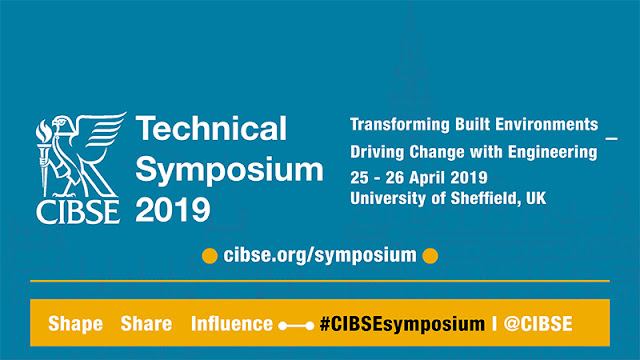Improving workplace productivity by optimising the indoor environment #CIBSEsymposium
Improving workplace productivity by optimising the indoor environment
Productivity levels in the UK are known to lag behind those of other leading economies. The Office for National Statistics has found that the average UK worker is 26% less productive than a German worker and 23% less so than an American worker. This productivity gap can be attributed to economic factors (e.g. poor investment, inefficient processes), but also human factors such as stress, health and comfort.
We instinctively know that poor office conditions lead to dissatisfied, unproductive and unwell building occupants. However, until now the relationship between indoor environmental conditions and productivity has been largely studied in the laboratory. New research findings have demonstrated how improvements to our indoor environment at work could help improve workplace productivity.
Funded by the Engineering and Physical Sciences Research Council (EPSRC) and Innovate UK, the three-year research project entitled Whole Life Performance Plus (WLP+) provided evidence and detailed insights into the relationship between poor indoor environmental conditions and dissatisfied, unproductive or unwell worker in real office environments. The main objective of WLP+ project was to gain an empirical, evidence-based understanding of how to optimise working conditions and improve staff performance and productivity.
Between February 2017 and October 2018, the WLP+ project continuously monitored the indoor environment of two office buildings that represent UK working conditions – one modern and one older building. Staff from the two buildings undertook over 7,850 surveys and tasks such as proof reading, numerical, and Stroop tests in a variety of indoor temperatures, CO2 levels and Relative Humidity conditions. The lessons learnt were applied in another ultra-modern building.
The research found that when CO2 levels were lowered, people completed the tests dramatically faster and scored better.
• Test scores improved by up to 12%
• Where test speed was measured in one building, people worked 60% faster in lower CO2 concentrations, taking a mean of 8.2 minutes to complete a test in low CO2 concentrations, compared with 13.3 minutes in modest CO2 concentrations.
It is evident that optimising the indoor environment will allow workers to perform at increased cognitive capability, speed and accuracy of work and output. Harnessed in the right way, businesses can convert this increased output into company-wide productivity, competitiveness, resource utilisation (both human and real‑estate assets), return on investment and improved bottom lines. This conclusion, combined with the fact that every building that was reviewed could be optimised, provides a strong investment case for organisations to review and improve the indoor environmental conditions in all existing buildings and for optimising the indoor environmental conditions in new, existing or refurbished workplaces. The study highlights a relatively simple way for UK businesses and Government to increase the output of our economy by 2 to 3.5%, worth an additional £70 billion.
Detailed findings from the research were presented as part of a technical paper - Defining the link between indoor environment and workplace productivity in naturally and mechanically ventilated office environments at CIBSE Technical Symposium 2019.
About the author and WLP+
Professor Rajat Gupta, Principal Investigator of WLP+ project
Director of the Oxford Institute for Sustainable Development, Oxford Brookes University
View his extended biography
WLP+ project was collaboration between industry partners (LCMB Building Performance Ltd, Emcore, Constructing Excellence, British Council for Offices, Estates department of Kings College) and academics from Oxford Brookes University. View the full report ahead of having a chance to discuss it with Professor Gupta.
His paper presentation No 18.4 was included in the Session 18 stream focusing on "Developing sustainable buildings and systems" and took place on Day Two of the Programme, Friday 26th April 2019.
See Symposium programme and full event overview.
About CIBSE Technical Symposium
The CIBSE Technical Symposium is an annual event featuring speakers and poster presentations from a range of disciplines. All papers and posters are peer reviewed. Anybody can submit a topic for consideration, which will then be assessed by a panel of reviewers to determine its suitability.
Have you attended Professor Gupta's session? Share your thoughts on his perspective @CIBSE I CIBSE Linkedin using #CIBSESymposium
Thank you to those who joined us in Sheffield.



.png)


Comments
Post a Comment